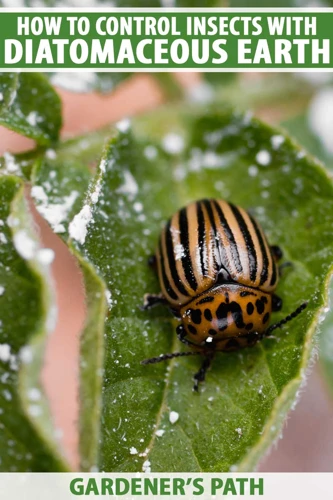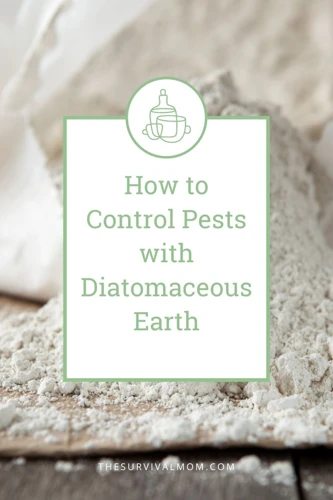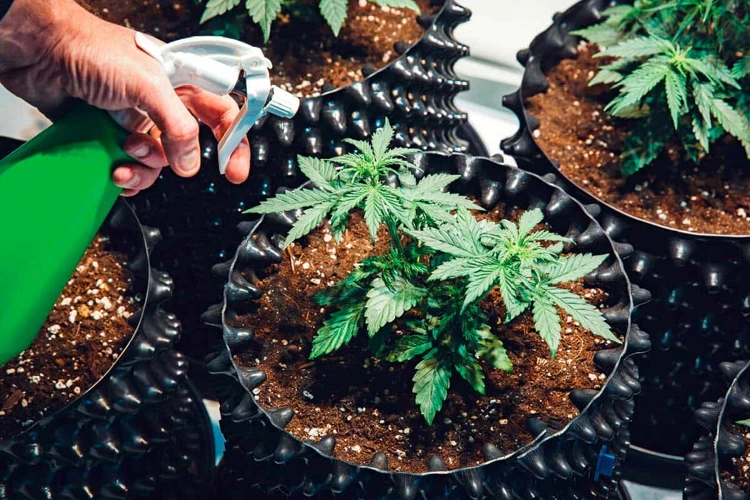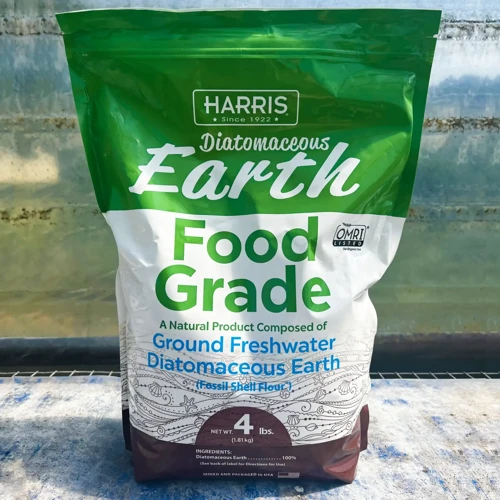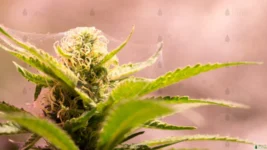
How to Use Diatomaceous Earth for Killing Cannabis Pests
As a cannabis grower or gardener, dealing with pests can be a frustrating and time-consuming task. While there are various chemical pesticides available on the market, they can be harmful to both the environment and your health. This is where diatomaceous earth (DE) comes in as a natural and chemical-free alternative for pest control. But what is DE exactly, and how does it work? In this article, we will explore the benefits and applications of using DE for killing cannabis pests and how to do it step-by-step.
What is Diatomaceous Earth (DE)?
Contents
Have you heard of diatomaceous earth (DE)? It’s a natural substance that may be a game-changer in your cannabis pest control routine. If you’re not familiar with DE, you might be perplexed by what it is and how it works. In this section, we’ll dive into the details of what makes DE such a powerful tool against pests. Let’s explore the composition and mechanisms behind this remarkable substance.
What is it made of?
Diatomaceous Earth (DE) is made from the fossilized remains of diatoms, a type of hard-shelled algae that lived in oceans and fresh water millions of years ago. DE is mainly composed of silica, a mineral found in rocks and sand.
However, there are two types of DE: food-grade and industrial-grade. Food-grade DE is high-quality and is used for human and animal consumption, whereas industrial-grade DE is mainly used for pest control and filtration in pools. Industrial-grade DE may contain high levels of crystalline silica, which is harmful to humans and animals.
In terms of composition, both food-grade and industrial-grade DE are made of 80-90% silica, with the remaining percentage made up of other minerals like iron, calcium, and magnesium. Silica is the main active ingredient in DE that makes it so effective against pests.
Below is a table summarizing the composition of both food-grade and industrial-grade DE:
| Food-Grade DE | Industrial-Grade DE | |
|---|---|---|
| Composition | 80-90% silica, with remaining percentage made up of other minerals like iron, calcium, and magnesium | 80-90% silica, with remaining percentage made up of other minerals like iron, calcium, and magnesium and may contain high levels of crystalline silica |
| Main Use | Human and animal consumption | Pest control and filtration in pools |
| Safety | Generally considered safe for human consumption and use | May contain high levels of crystalline silica, which is harmful to humans and animals |
It is important to choose the right type of DE for your specific use, especially when it comes to using DE for pest control in your cannabis garden. It is always recommended to use food-grade DE for any type of direct contact with plants and soil, as it is safe for consumption by humans and animals alike. Industrial-grade DE may contain harmful toxins and should be used with caution.
How does it work?
Diatomaceous Earth (DE) works by physically abrading and dehydrating the exoskeleton of pests. When pests, like mites, come into contact with DE, the sharp edges of the fossilized diatoms scratch their exoskeleton, causing them to lose moisture and become dehydrated. This leads to their eventual death.
- Mechanical Action: DE works by physically abrading the exoskeleton of pests.
- Absorption: DE absorbs the lipids from the exoskeletons of insects and dries them out.
- Dehydration: The scratchy edges of DE slices through the exoskeletons of pests, which leads to a loss of moisture and eventual death of the insect.
DE is effective against a wide range of pests, including mites, aphids, thrips, whiteflies, and caterpillars. Despite its effectiveness, DE is safe for humans, animals, and plants. It is also a natural and chemical-free method of pest control.
Why Use Diatomaceous Earth for Cannabis Pest Control?
When it comes to pest control in the world of cannabis cultivation, choosing the right method can be a daunting task. You want to ensure the safety of your plants while also maintaining a chemical-free environment. This is where diatomaceous earth (DE) comes into play. DE not only provides a natural solution but is also highly effective against a wide range of pests. In this section, we will explore the benefits of using diatomaceous earth for pest control in cannabis cultivation.
It’s Natural and Chemical-Free
One of the biggest benefits of using Diatomaceous Earth (DE) for cannabis pest control is that it’s completely natural and chemical-free. This is a huge plus for anyone who wants to avoid harsh toxins and chemicals in their garden or grow room.
Natural: DE is made from the fossilized remains of tiny, aquatic organisms called diatoms. These diatoms have skeletons made of silica, and when they die, their skeletons sink to the bottom of bodies of water. Over time, these skeletons accumulate and form deposits of DE.
Chemical-free: Unlike many commercial pesticides, DE does not rely on harmful chemicals to be effective. Instead, it works by physically damaging the exoskeletons of insects and other pests, causing them to dehydrate and die.
Using DE for pest control is a great option for those who are concerned about the environmental impact of chemical pesticides. It’s also a good choice for anyone growing cannabis for medicinal purposes, as chemical pesticides can leave behind harmful residue that can be harmful to human health.
It’s Effective Against a Wide Range of Pests
Using Diatomaceous Earth for cannabis pest control is a natural and chemical-free option that is effective against a wide range of pests. Diatomaceous earth has been shown to effectively kill pests such as mites, thrips, aphids, caterpillars, and other insects that can damage and harm cannabis plants.
One of the reasons why Diatomaceous Earth is so successful in controlling pests is due to its abrasive texture. When pests come into contact with DE, it causes small cuts and abrasions on their exoskeleton, which leads to dehydration and ultimately death. This natural, physical process is not only effective, but it also prevents pests from developing resistance to the treatment.
Even better, Diatomaceous Earth can also be effective in controlling some fungal and bacterial diseases. The silica in DE has been shown to inhibit the growth of microbes, which can help prevent plant diseases.
Another benefit of using Diatomaceous Earth for Cannabis pest control is that it does not harm beneficial bugs such as ladybugs, lacewings, and bees. This allows growers to maintain a healthy ecosystem within their grow rooms or gardens while effectively controlling unwanted pests.
The unique physical properties of Diatomaceous Earth make it a versatile, effective, and natural solution for controlling pests that pose a threat to the health of cannabis plants.
How to Apply Diatomaceous Earth to Cannabis Plants
So, you’ve decided to use diatomaceous earth for your cannabis pest control needs – great choice! But how exactly do you apply it to your plants? Applying diatomaceous earth may seem straightforward, but there are a few key steps to follow to ensure its effectiveness. In this section, we’ll cover everything you need to know about applying diatomaceous earth to your cannabis plants step by step. From choosing the right DE to reapplying as needed, we’ll guide you through the process of keeping your plants pest-free in a natural and effective way.
Step 1: Choose the Right DE
Before applying diatomaceous earth (DE) to your cannabis plants to control pests, it’s important to choose the right type of DE. Not all DE products are created equal, and using the wrong one could lead to negative effects on your plants or ineffective pest control.
What to look for:
| Criteria | Explanation |
|---|---|
| Food grade | Make sure the DE product you choose is labeled as “food grade.” This means it has been treated in a way that makes it safe for consumption for both humans and pets. It also means that it’s free of harmful chemicals or additives that could harm your plants. |
| Unrefined | Choose an unrefined DE product to ensure it still contains the beneficial materials, such as silica, that make it effective for pest control. Refining the DE can remove these materials, rendering it less effective. |
| Particle size | The particle size of the DE you choose will impact how effectively it controls pests. Look for DE labeled as “coarse” or “large particle size,” as these will be more effective for pest control than fine particle size DE. |
Where to buy:
You can find food grade diatomaceous earth at most garden stores, online retailers, or health food stores. Be sure to read labels and product descriptions carefully to ensure you’re getting the right type of DE for pest control on your cannabis plants.
Step 2: Apply DE to Plants
Step 2: Apply DE to Plants
Applying Diatomaceous Earth to your cannabis plants is a straightforward process, but it’s essential to do it correctly to ensure its effectiveness. Here are the steps to follow:
| Step 1 | Choose a dry day to apply DE to your plants, as it may not be as effective on wet surfaces. |
| Step 2 | Wear protective gear before handling DE. This can include gloves, a mask to protect your mouth and nose from inhaling the fine dust, and eye protection. |
| Step 3 | Using a small handheld strainer, dust your cannabis plants with a light layer of DE. Alternatively, you can apply DE with a paintbrush or a soft-bristled brush gently. |
| Step 4 | Ensure that you cover all parts of the plant, including the tops and undersides of the leaves, the stem, and branches. Pests often hide in hard-to-reach areas, so do a thorough job. |
| Step 5 | After applying the DE, avoid watering the plants immediately, as it can wash away the layer of diatomaceous earth, reducing its effectiveness. Wait 24-48 hours before watering the plants. |
Remember to be gentle when applying the DE so that you don’t damage your cannabis plants. It’s also crucial to follow the manufacturer’s instructions on how much DE to apply per plant. Typically, a light dusting is sufficient to keep pests at bay.
Step 3: Reapply as Needed
After applying Diatomaceous Earth (DE) to your cannabis plants, you need to check periodically whether it’s still effective or not. Reapplication is necessary as DE can lose its potency when it gets wet or muddled with soil. Reapply DE after a rainstorm or irrigation, or when you notice the white powdery substance has disappeared from the plants.
To make sure you’ve missed no spots, use a duster or a paintbrush to apply DE again on the top and bottom of the leaves, as well as the stems and soil. Reapply DE every week, or as needed, to keep your cannabis plants protected from pests.
Remember that DE doesn’t discriminate between good and bad insects. It can also eliminate helpful insects that control pest populations. So, use DE sparingly and avoid applying it to flowering plants or areas with beneficial insects.
If you have a severe pest infestation, consider using a combination of natural remedies, including DE, to combat the problem. While DE is an effective measure against most pests, it may not work for specific varieties. Monitor your plants regularly and use alternative methods if DE isn’t successful in eradicating the pests from your cannabis plants.
Here’s a summary of Step 3: Reapply as Needed in the following table:
| Step 3 | Action |
|---|---|
| Reapply DE as Needed | Check plants regularly for effectiveness |
| Reapply after rain or irrigation | |
| Reapply on top and bottom of leaves, stems, and soil | |
| Reapply every week or as needed | |
| Avoid applying to flowering plants and areas with beneficial insects | |
| Consider using alternative methods if DE isn’t successful |
Step 4: Use Caution When Applying DE to Flowering Plants
DE can be an effective pesticide for controlling pests on cannabis, but it’s important to be cautious when applying it to flowering plants. Using DE improperly can damage the delicate buds and negatively impact the quality of your harvest. Here are some tips for using DE on flowering cannabis plants:
| Tip | Description |
| Wait until flowering is almost complete | It’s best to wait until you’re near the end of the flowering cycle before applying DE to your cannabis plants. This will help avoid damage to the buds and minimize the risk of any residue remaining on the finished product. |
| Apply DE only to the stems and leaves, avoiding the buds | When applying DE to flowering plants, it’s important to avoid getting it on the buds. This can be challenging, but using a piece of cardboard or paper to shield the buds can help. Focus on applying the DE to the stems and leaves, where pests tend to gather. |
| Be extra cautious with indoor plants | If you’re growing cannabis indoors, the risk of getting DE on the buds is higher due to the limited space. Make sure to apply DE in a well-ventilated area and use a shield to protect the buds. |
| Wash your plants after harvest | If you do accidentally get DE on your buds, don’t panic. You can wash them off after harvest using water and a mild soap. This will help remove any residue and ensure your finished product is clean and safe to consume. |
By following these tips, you can safely and effectively use DE as a pesticide for controlling pests on your cannabis plants, even during the flowering phase. Remember to always use caution and take appropriate measures to protect the quality of your harvest.
Alternative Ways to Use Diatomaceous Earth in Your Grow Room or Garden
Are you looking for additional ways to incorporate diatomaceous earth (DE) into your cannabis grow room or garden? Look no further! There are several alternative methods for using DE that can enhance its effectiveness as a natural pesticide and soil amendment. In this section, we’ll explore three innovative ways to utilize DE in your growing operation: mixing it with liquids, combining it with other natural pesticides, and incorporating it into your soil or growing medium. Let’s dive in!
Mix DE with Water or Other Liquids
Diatomaceous Earth (DE) can also be mixed with water or other liquids to create a spray that can be used to kill pests on cannabis plants. Here are some steps to follow when mixing DE with liquids:
- Step 1: Choose the right type of DE. Food grade DE is safe for humans and pets, while pool grade DE should not be used in a garden setting.
- Step 2: Mix 4 tablespoons of DE per gallon of liquid. This can include water, vegetable oil, or soap. Mix the DE and liquid together thoroughly, making sure that the DE is fully dissolved into the liquid.
- Step 3: Pour the mixture into a spray bottle and apply by spraying it onto the leaves, stems, and soil of the cannabis plant. Be sure to cover all areas where pests may be present.
- Step 4: Reapply the mixture every 3 to 4 days, or as needed, to ensure that all pests are eliminated.
Mixing DE with liquid is an effective way to control common cannabis pests such as spider mites, aphids, and thrips. Additionally, the mixture is safe for cannabis plants and does not contain harmful chemicals that could be harmful to the environment. However, it is important to wear protective gear when mixing and spraying DE to avoid inhaling the fine powder.
Mix DE with Other Natural Pesticides
One alternative way to use diatomaceous earth in your grow room or garden is to mix it with other natural pesticides. This can create a powerful and effective pest control solution that targets a wide range of pests.
To do this, first identify which pests you need to target and research which natural pesticides are effective against them. Some examples of natural pesticides include neem oil, garlic oil, and peppermint oil.
Next, mix the diatomaceous earth with the chosen natural pesticide according to the manufacturer’s instructions. This can be done by adding the appropriate amount of each to a spray bottle with water or another liquid carrier.
Shake the mixture well before use and apply it to your cannabis plants or affected areas in your garden. This combination of natural pesticides can provide an extra layer of protection against pests, as well as a prevention method for pest infestations.
It’s important to note that just because a pesticide is labeled as “natural”, it doesn’t necessarily mean it’s harmless to humans and pets. Always read the labels and follow safety instructions when handling and applying any pesticides, even natural ones.
In addition, mixing diatomaceous earth with natural pesticides may reduce the effectiveness of the diatomaceous earth, as it may absorb some of the moisture from the liquid carrier. It’s best to use this method as a complement to other pest control methods, rather than relying solely on it.
Mix DE with Soil or Growing Medium
Mix DE with Soil or Growing Medium
Another way to incorporate diatomaceous earth into your cannabis pest control strategy is by adding it to your soil or growing medium. This will not only help kill any pests residing in the soil, but it will also prevent future infestations.
To mix DE with soil or growing medium, follow these steps:
| Step 1: | Choose a high-quality diatomaceous earth product and measure out the appropriate amount according to the package instructions. Depending on the size of your growing container, you may need anywhere from a few tablespoons to several cups of DE. |
| Step 2: | Sprinkle the DE evenly over the top of the soil or growing medium, being careful not to disturb any roots or seedlings. |
| Step 3: | Lightly mix the DE into the top layer of soil or growing medium, using a spade or cultivator. Be sure to mix it in enough so that it is not just sitting on top. |
| Step 4: | Water the soil or growing medium thoroughly to help activate the DE and distribute it more evenly throughout the soil. Repeat this process as needed, depending on the severity of any pest infestations. |
When mixed into soil or growing medium, diatomaceous earth will continue to work for an extended period, as long as it remains dry. This means that it will be effective even if you don’t water your plants every day. However, it is important to note that DE will lose its effectiveness if it becomes wet, so be sure to only water your plants as necessary and avoid overwatering.
Incorporating diatomaceous earth into your growing medium can be a great way to control pests naturally and without the use of harsh chemicals. Give it a try and see for yourself how effective it can be in keeping your cannabis plants healthy and pest-free.
Precautions When Using Diatomaceous Earth
As with any natural pest control method, it’s important to take precautions when using diatomaceous earth. While it’s generally safe for humans and pets, it can be harmful if inhaled or ingested in large amounts. Here are some important precautions to keep in mind when using DE for cannabis pest control.
Wear Protective Gear
When using diatomaceous earth for killing cannabis pests, it is important to take necessary precautions to protect yourself. Here are some tips on how to stay safe:
- Wear protective gear: Before handling DE, wear a dust mask to prevent inhaling the fine powder. Additionally, wear gloves to avoid skin irritation and eye protection to prevent eye irritation.
- Ensure proper ventilation: Make sure the area where DE is being applied has adequate ventilation. Use a fan or open windows and doors to allow for airflow.
- Do not consume DE: Do not consume DE in any form as it can cause lung irritation and damage.
- Keep out of reach of children and pets: Always store DE out of reach of children and pets to avoid accidental ingestion.
By following these safety tips, you can effectively use diatomaceous earth to control pests in your cannabis garden without putting yourself at risk. Remember to always prioritize safety when handling any type of pesticide or gardening product.
Apply DE in a Well-Ventilated Area
When applying diatomaceous earth (DE) to your cannabis plants, it is important to do so in a well-ventilated area to avoid inhalation of the powder. Here are some steps to ensure safe application:
- Choose an outdoor location: Ideally, you should apply DE outdoors to prevent indoor air pollution. If you must apply it indoors, use a room with open windows, fans, or air purifiers to increase ventilation and decrease the concentration of airborne dust particles.
- Protective gear: Wear a mask covering your nose and mouth, goggles, and gloves to avoid inhaling or getting the dust in your eyes or skin.
- Use a dust mask: A dust mask with a filter rated for fine particles (such as N95) can offer additional protection for your respiratory system.
- Avoid windy conditions: To prevent the dust from spreading outside the targeted area, avoid applying DE on windy days or use a shield to cover the plants.
- Apply DE gently: Use a small scoop, brush, or applicator to apply DE lightly and evenly on the surfaces of the plants or surrounding areas where pests are present. Avoid shaking the powder or creating clouds of dust.
- Cover the plants: Cover the plants with a light cloth or paper bag after applying DE to prevent dust from settling on the leaves or flowers.
- Clean up: After application, clean any spills or residues with a wet cloth or vacuum with a HEPA filter to avoid dispersing dust particles.
By applying DE in a well-ventilated area and taking precautions to avoid inhalation, you can safely and effectively control pests on your cannabis plants.
Avoid Inhaling DE
As with any type of fine powder, it is important to avoid inhaling diatomaceous earth (DE). Inhaling DE can cause irritation to the nose, throat, and lungs, leading to coughing, shortness of breath, and even respiratory issues in some cases. To prevent inhalation, take the following precautions:
| Precaution | Description |
|---|---|
| Wear a mask | When applying DE, wear a mask with an N95 respirator rating to filter out the fine particles. |
| Apply carefully | Be careful when applying DE so that it doesn’t become airborne. Don’t apply it on a windy day or use a fan while applying it. |
| Don’t stand directly over the application area | Stand a few feet away when applying DE to avoid inhaling the powder. |
| Keep animals and children away | Avoid allowing children and pets near the application area until the powder has settled and the area has been cleaned up. |
| Clean up carefully | When cleaning up any excess DE, use a damp cloth or vacuum with a HEPA filter to avoid stirring up dust. |
By taking these precautions, you can safely use DE to control pests on your cannabis plants and in your grow room or garden.
Conclusion
In conclusion, Diatomaceous Earth is a natural and effective solution for controlling pests in your cannabis plants. By choosing the right type of DE and applying it correctly, you can eliminate a wide range of pests without any toxic chemicals or harmful side effects.
However, it’s important to remember that DE should not be the only solution to pest control. It’s always best to practice proper sanitation measures, including cleaning and sterilizing your grow room, and preventing pest infestations before they start.
If you do find yourself dealing with a pest problem, consider using DE as part of a holistic pest management approach, along with other natural pesticides and control methods.
Remember to always use caution when handling DE and follow the safety precautions, including wearing protective gear and working in a well-ventilated area. And if you have any concerns about using DE on your cannabis plants, consult with a professional or do thorough research before starting.
Overall, Diatomaceous Earth can be a valuable tool in the fight against cannabis pests. By incorporating it into your pest control strategy and using it properly, you can keep your cannabis plants healthy and thriving without exposing them to harmful chemicals or toxins.
Frequently Asked Questions
1. Can diatomaceous earth harm my cannabis plants?
No, DE is a completely natural and harmless substance that won’t damage or harm your cannabis plants.
2. Is diatomaceous earth safe to use around pets?
Yes, DE is safe around pets and humans as long as it is not inhaled, and it is not ingested in large quantities.
3. How long does diatomaceous earth last?
DE can remain effective for up to two weeks after application, or until it is washed away by rain or watering.
4. Will diatomaceous earth kill beneficial insects in my garden?
While DE is effective against a wide variety of pests, it will not harm beneficial insects such as ladybugs or bees.
5. Do I need to wear protective gear when applying diatomaceous earth?
It is recommended to wear gloves, a dust mask, and safety glasses when applying DE to protect against inhalation or eye and skin irritation.
6. Can diatomaceous earth be used as a replacement for other pesticides?
DE can be used as an effective natural alternative to chemical pesticides, but it may not be as effective in controlling certain pests.
7. Can diatomaceous earth be used on indoor cannabis plants?
Yes, DE can be used on both indoor and outdoor cannabis plants to control pests.
8. Does diatomaceous earth need to be washed off before consuming harvested cannabis?
Yes, it is recommended to wash off any residual DE from harvested cannabis before consuming.
9. Can diatomaceous earth be used on other types of plants?
Yes, DE can be used on a variety of plants to control pests, but it is important to choose the appropriate type of DE for the specific plant.
10. How can I dispose of used diatomaceous earth?
DE can be safely disposed of in the trash or compost bin, but it should not be poured down drains or flushed down toilets.

